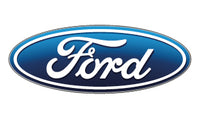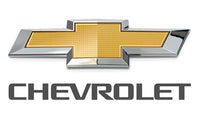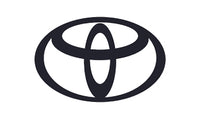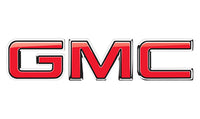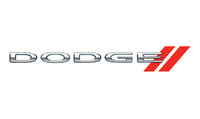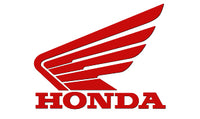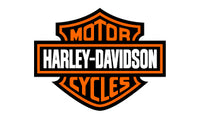Your car's transmission transmits the power from the motor to the differential, which then sends it on to the wheels. Because the engine can only operate in a limited range of speeds, the transmission must also work to speed up or slow down the revolutions being transmitted to the wheels. In order to allow reasonable acceleration, the transmission also must multiply toque through gearing so the motor can turn at a speed it makes power while the vehicle is moving very slowly.
Sometimes transmissions are also called "gearboxes", though as we will see, modern CVT transmissions have few gears inside them at all.
When the transmission incorporates the differential and drive axles into it, it is referred to as a "transaxle", which is what you find in most front wheel drive vehicles, and many sports cars, like the Corvette.
In this tutorial we’ll explain exactly how each type of transmission works, starting with the most common.

Conventional Automatic Transmission
In the American market, the conventional automatic, or torque converter automatic, is the most popular type of transmission and has been since approximately the 1950s, though they were originally introduced by General Motors in the 1930s. As the number of forward gears in the automatic has gone up, the CVT has gained ground in the marketplace thanks to its simplicity.
In place of the manual transmission's mechanical clutch, a conventional automatic gearbox uses fluid inside of a torque converter to connect the engine to the gearbox. The converter is roughly donut shaped, and in modern cars also often includes a hydraulically activated clutch inside for greater efficiency. The side nearest the engine is bolted to the flywheel, and through the outer cover turns the impeller, or pump. The transmission input shaft connects to the turbine inside, which is moved by the fluid spun by the impeller. The stator between them redirects the moving fluid to amplify the power of the spinning oil at low speeds by directing more of it towards the impeller, so helping to drive the turbine and ultimately the gearbox.
Inside the conventional automatic gearbox are something called planetary gears. Three or four smaller gears ‘orbit’ a central ‘sun’ gear within a larger outer ring gear. The smaller gears are always engaged and rotate between the sun and ring gears. With the aid of hydraulic valves and speed and load sensors, internal brakes and clutches hold some outer ring gears with a band, while allowing others to turn, so producing a different gear ratio. Because the gears are always engaged, gear selection is smooth and there is little shock to the system, so it can handle large amounts of engine torque.
Modern cars use a computer to decide which gear to engage, based on vehicle speed, throttle position, engine speed, and other factors. Before that, purely mechanical means were used to determine the same thing, but with less accuracy. The computer control, along with the increase from four speeds to eight or more is what has allowed the increased efficiency of the modern automatic.

Constantly variable transmission (CVT)
Until recently, you were most likely to find a CVT in snowmobiles, mopeds and scooters, but advances in technology have allowed them to be scaled up for use in many smaller cars. The simplest type uses a belt or chain of fixed length and two pulleys that can be made larger or smaller, instead of gears. In combination with the engine’s speed, a computer decides how to vary the pulley dimensions relative to each other. For example, when you pull away, the engine pulley is smaller than the transmission pulley, so the engine can spin at a high RPM for more power and torque, and maximum toque multiplication. As the speed of the vehicle increases, the pulleys can adjust so the engine pulley is large, and the transmission pulley is small for maximum fuel efficiency and an overdrive ratio.
Theoretically, the car is always in the right gear for power and efficiency, whether cruising or accelerating. However, to drivers who are used to a conventional transmission, a CVT can sound like something is slipping, or the transmission isn't shifting. To remedy this, some car makers engineer in artificial steps in the pulley setting, to give a gear shift feeling.
The Subaru Justy was the first modern car to be sold in America with a CVT in 1989. Now, many small cars only offer a CVT as their automatic transmission option, but even luxury cars like the Audi A4, and minivans like the Chrysler Pacifica have used them. Nearly every car maker in the 21st century has their own version of a CVT in some applications.

Manual transmission
A manual transmission has a clutch which allows you to disengage the motor from the transmission, and a gear lever allowing you to choose from 3 to 7 gears, depending on the transmission.
The clutch is a simple disc pressed into the flywheel by springs. Imagine one or your hands is the gearbox side and the other, the engine side. Press the palms together and they both move if you rotate your wrist. relax and you can rotate one without the other. In place of your hands, the clutch uses a sandwich of grippy plates operated by the clutch pedal. The pressure plate and is bolted to the engine flywheel (a big metal wheel turned by the engine), with the clutch friction disc between them. The center of the friction disc is connected to the input shaft of the transmission. Pressing the clutch pedal counteracts the springs within the pressure plate, so the friction disc can rotate freely.
Inside the actual transmission are a number of gear sets, which slide back and forth when moved by shift "forks" operated by the shift lever. Each forward gear requires a set of two gears in the transmission, on two parallel shafts, one connected to the input and one to the output. When all goes well, only one set can be engaged at a time, but if a fork is bent or a linkage fails, they can jam in between gears or in two gears at once.
Because the output side gears are always turning with road speed, for smoothest shifting the engine speed needs to fall to the correct RPM for upshifts, or be raised to a higher RPM for downshifts. This also had to be done manually be a skilled driver on non-synchromesh gearboxes, but since the 1960s transmissions have employed synchronizers which quickly match the speeds of the gears as you are shifting. Rush your shift, and unless you "rev match" you will either grind the gears or find it hard to shift. The best manual transmission equipped sports cars today rev match by computer so you can shift faster.
Automated manual transmission (or semi-automatic transmission)
This transmission has an automatic clutch that allows you to change gears without operating the clutch pedal, or in some instances uses a system of motors and computers to control a conventional manual and provide fully automatic shifting. One of the earliest examples is the VW "Automatic Stickshift", which used an electrical switch on the shift lever itself to automatically disengage the clutch when you moved the lever. In the modern version, sensors, actuators and processors do the job of operating the clutch at exactly the right moment as you change gears so there’s no gear grinding.
In the BMW SMG transmission, the Smart FourTwo, and certain Maserati and Ferrari models, the traditional manual transmission is computer controlled. Electric motors and hydraulics do the work of shifting, and there is an automatic clutch as well. These cars can be driven exactly like a conventional automatic when placed in "drive" though there are complaints of issues at very low speeds, such as when parking.

Dual-clutch transmission
The most recently popularized type of transmission, which may be the best of both worlds, it the dual-clutch automatic manual. As the name implies, there are two clutches, and each sends the power through a different path inside of the transmission. The first clutch engages first, third, and fifth gear, while the second handles second, fourth and sixth, and a computer handles all the shifting and clutch engagement. With two clutches, the system can pre-select the next gear, up or down, and engage one clutch while disengaging the other. This means that when you need to initiate the next gear change, it happens instantly without any interruption in power or progress.
These systems offer the efficiency of a traditional manual, the ease of use of a conventional automatic, super quick shifts for performance, and the option of manual control.
Volkswagen Group had the first successful modern dual-clutch transmission and markets many dual-clutch systems under brand names including S-tronic (Audi), DSG (VW) and PDK (Porsche), and thinks enough of the technology to install it in their Bugatti supercar. Acura, Ford, Fiat, Nissan, BMW, Mercedes, Ferrari, and more are all using some form of dual-clutch system in some cars.
